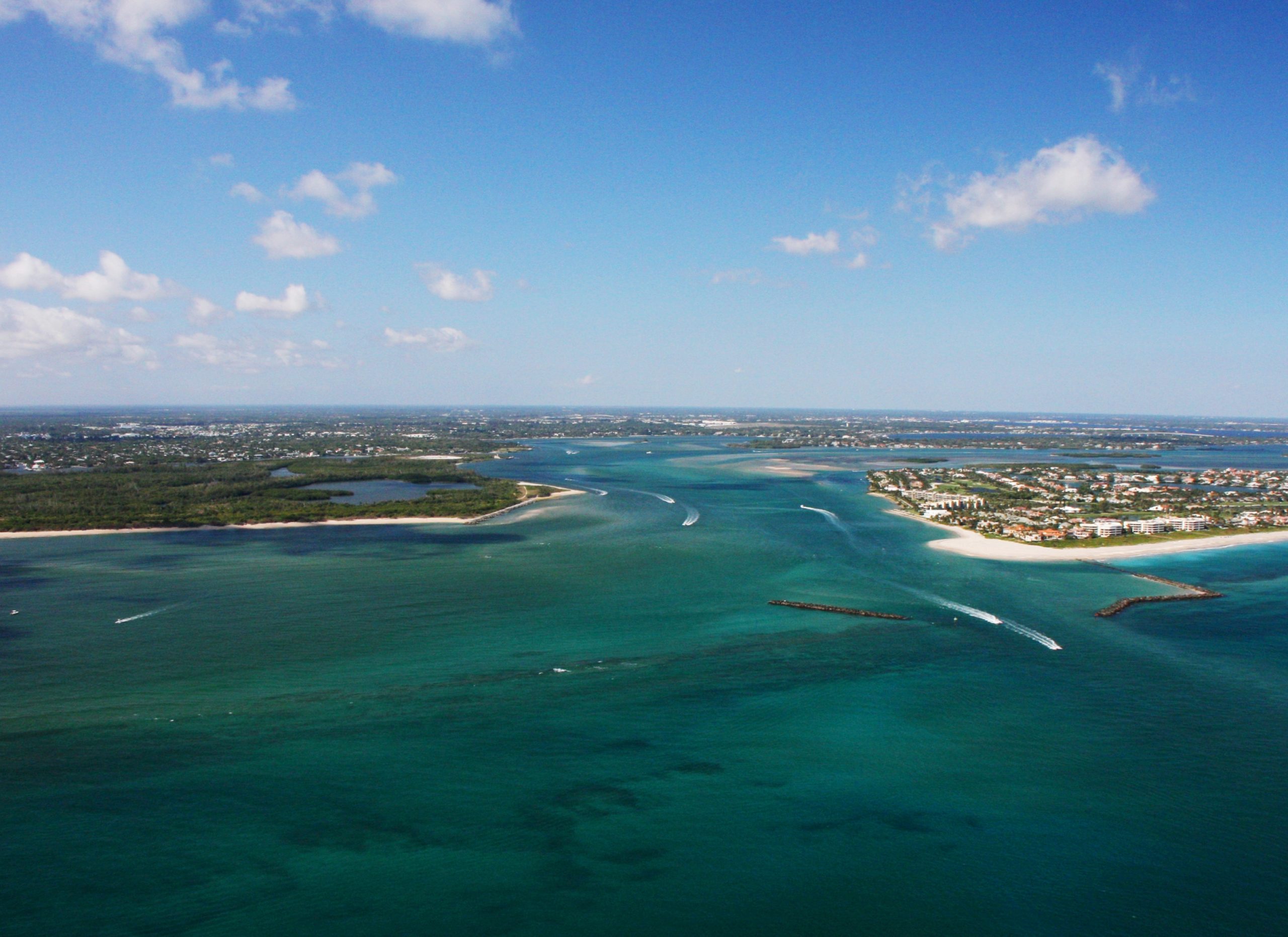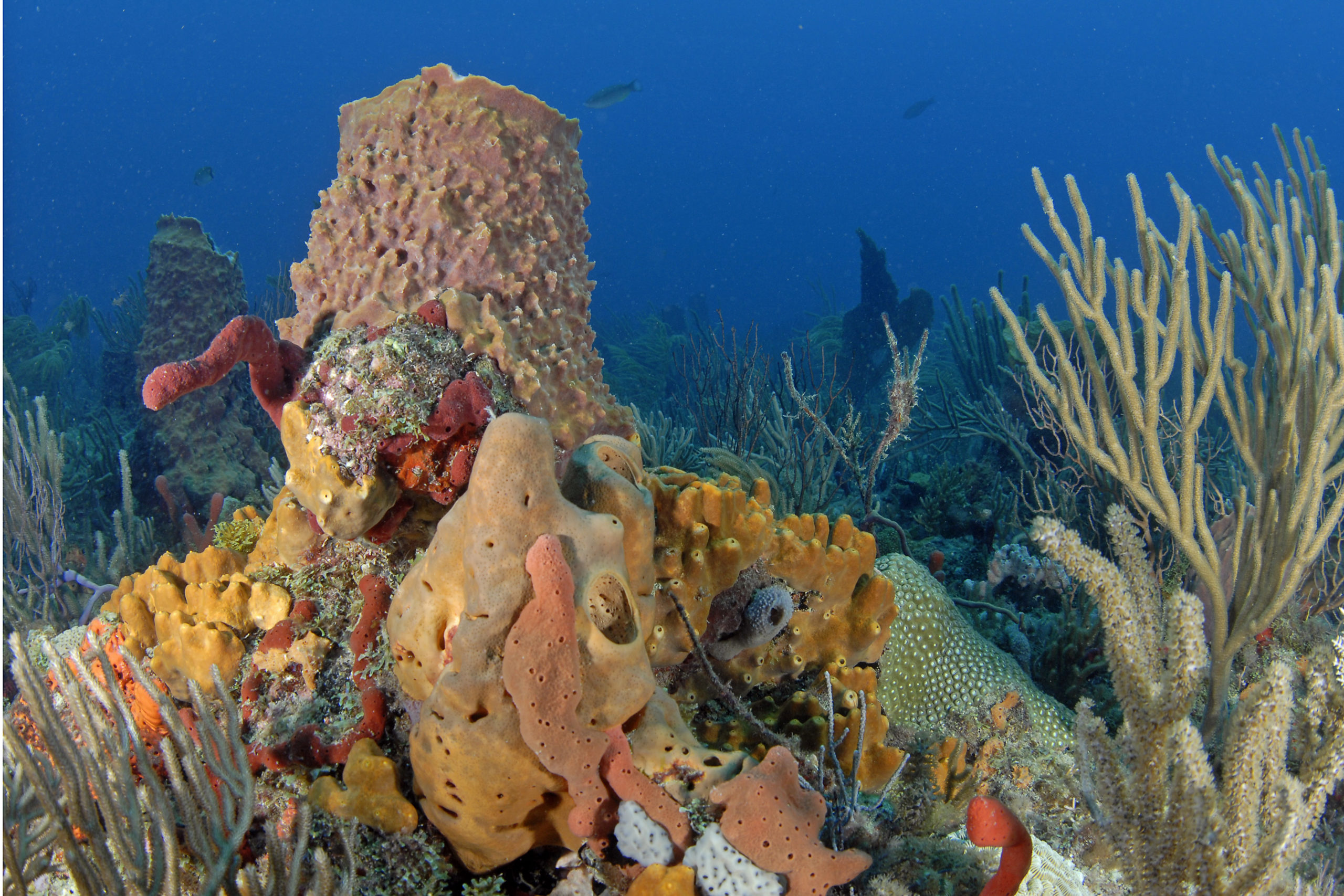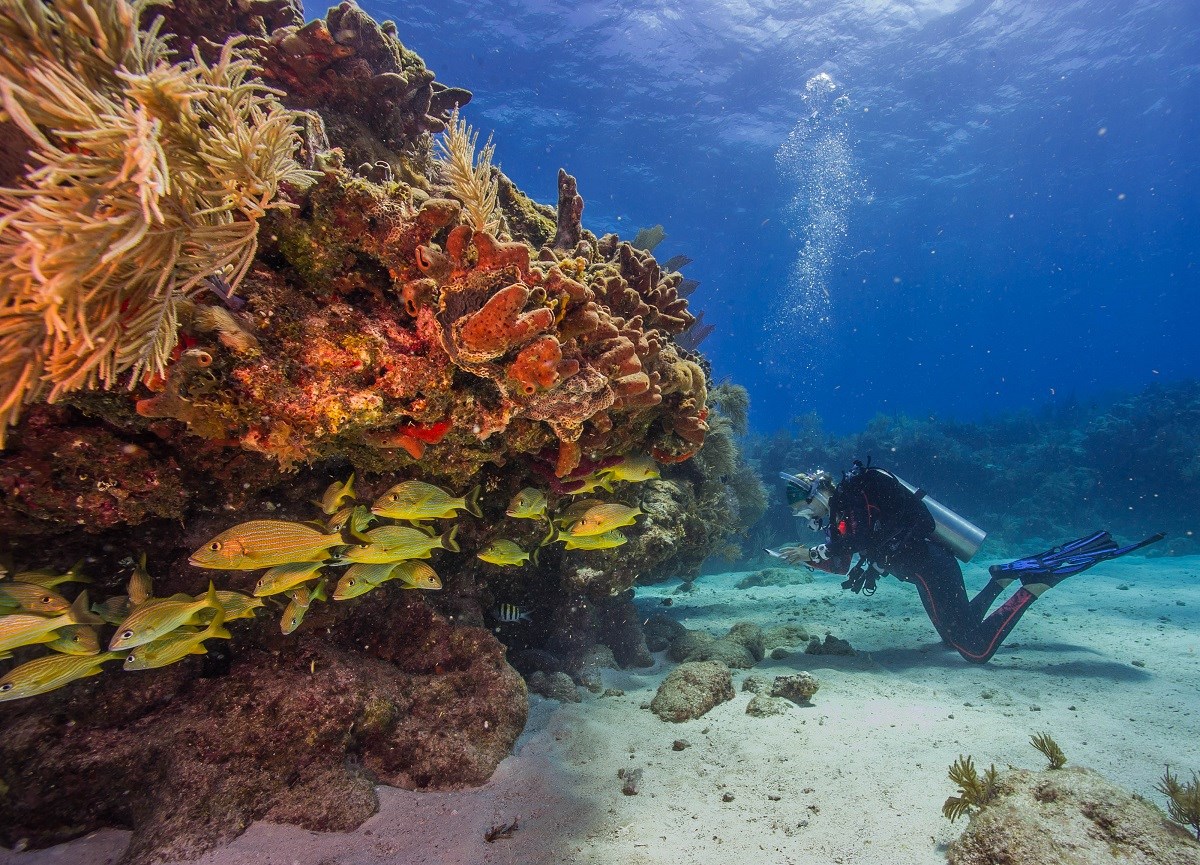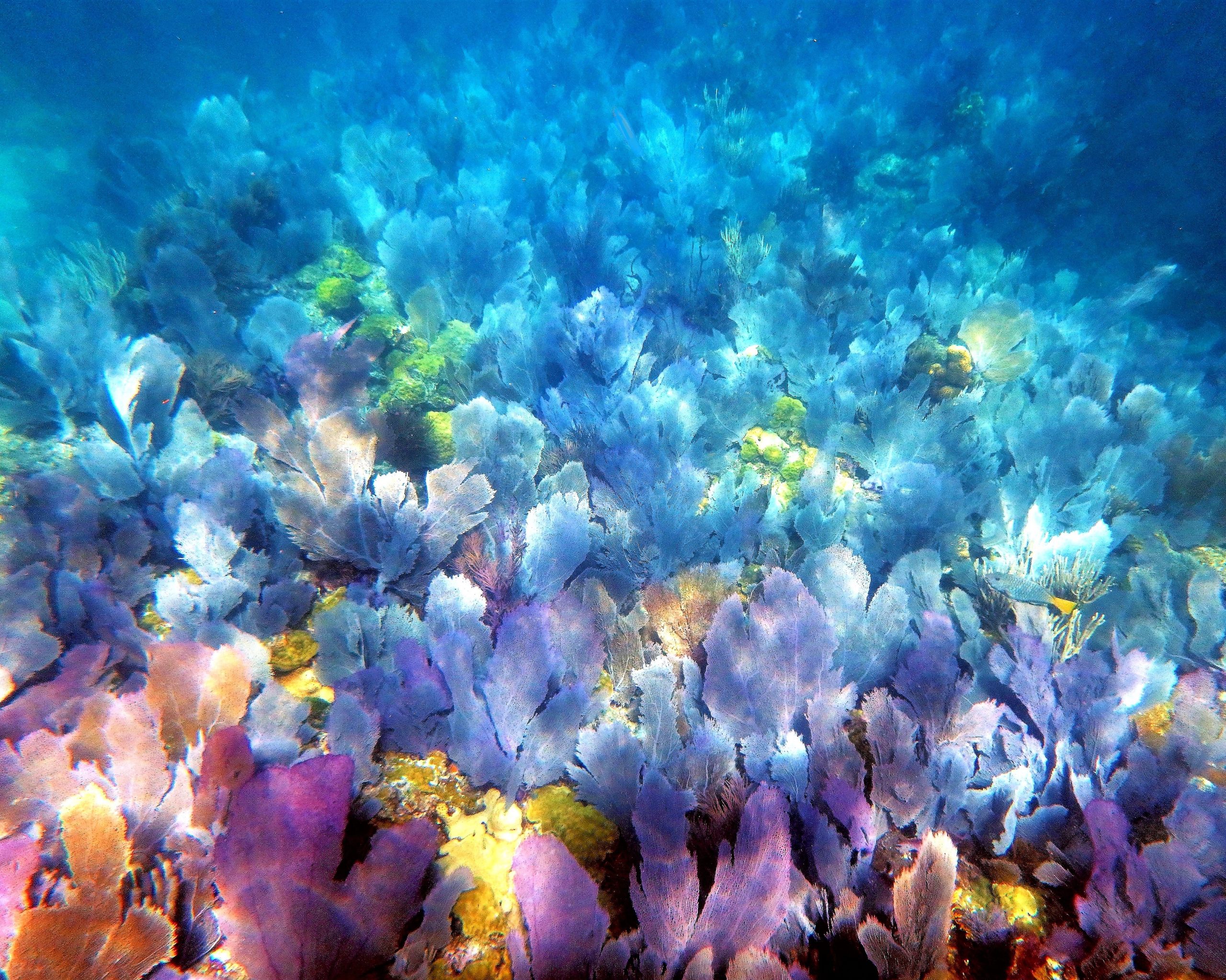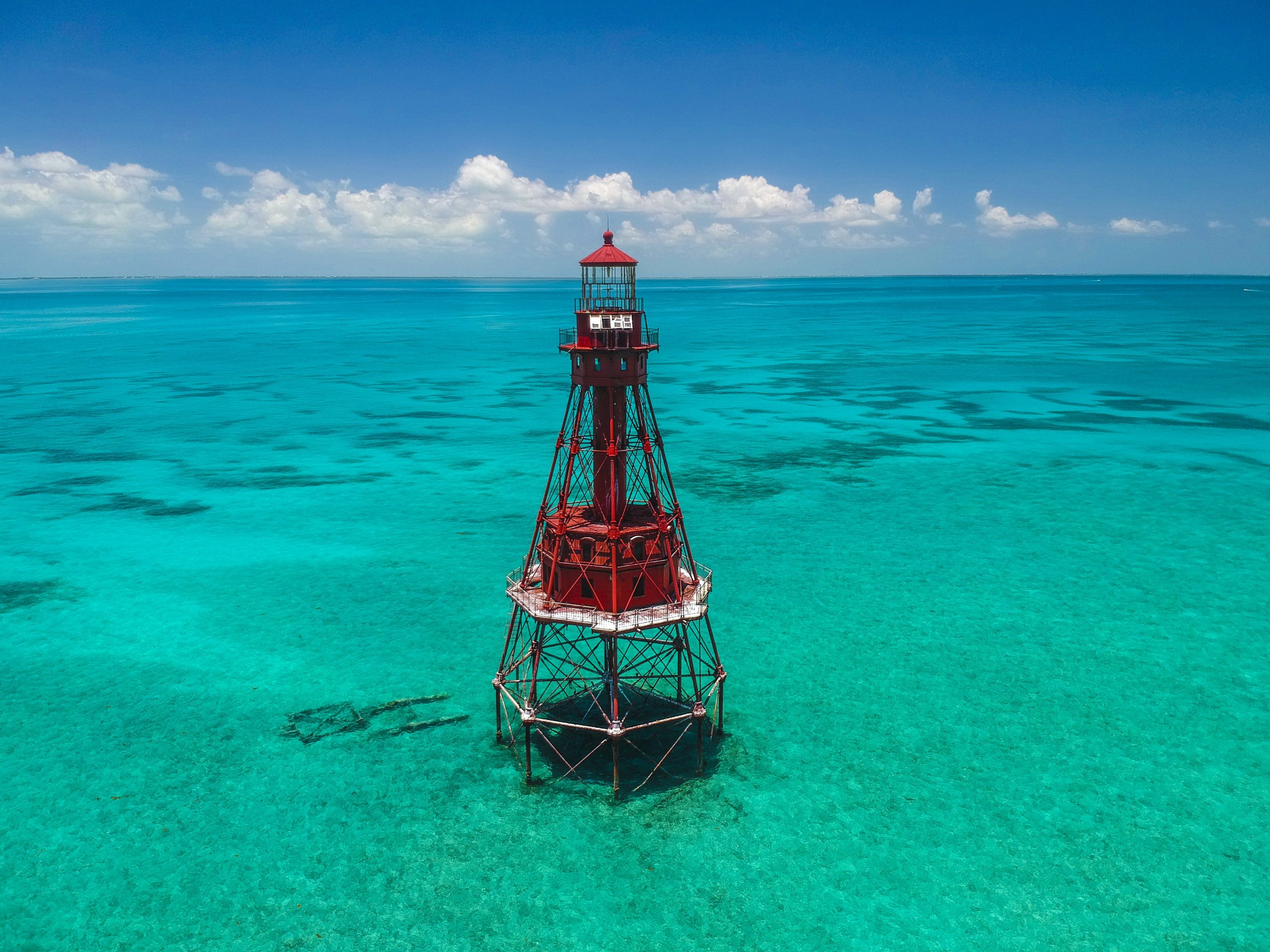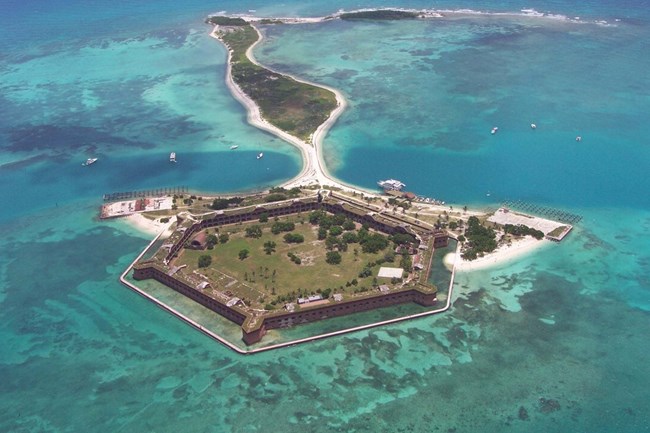Threats
In recent years, corals have experienced declines due to a combination of factors including coral disease, coral bleaching, high ocean temperatures and human impacts. Waves from storms and hurricanes can break coral colonies or cover them with sediment; algae can overgrow broken corals before they get a chance to recover; increased sea surface temperatures can lead to wide-scale bleaching events; a loss of predators can disrupt food webs; and coral can be vulnerable to extreme predation by fish, sea stars and other invertebrates. Coral reefs are also harmed by anything that affects water quality such as pollution from land runoff or fuel spills.
Coral reefs may recover after exposure to periodic damage; however, if corals experience sustained stress, including those imposed by people, they will have no recovery period and reefs will not be able to bounce back from even small declines.
To learn how your actions can help reduce these threats, view responsible practices.
Climate Change

Attribution: NPS image by Shaun Wolfe
As temperatures rise, mass coral bleaching events and infectious disease outbreaks become more frequent. Additionally, carbon dioxide absorbed into the ocean from the atmosphere has begun to reduce calcification rates in reef-building and reef-associated organisms by altering seawater chemistry and resulting in a decrease in pH.
This process is called ocean acidification.
Climate change is affecting coral reef ecosystems by making the environment they live in more stressful and difficult to reproduce in through sea level rise, changes to the frequency and intensity of tropical storms, marine heatwaves and altered ocean circulation patterns.
Any one of these stressors is a challenge, but when combined, all these impacts dramatically alter ecosystem function and the irreplaceable values that coral reef ecosystems provide to people around the globe.
Stony Coral Tissue Loss Disease
Florida’s Coral Reef is experiencing a multiyear outbreak of stony coral tissue loss disease (SCTLD). While disease outbreaks are not uncommon in corals, this event is unique due to its large geographic range, extended duration, rapid progression, high rates of mortality and the number of species affected. The disease can be transmitted to other corals through direct contact and water circulation.

First reported in 2014 off the coast of Miami-Dade County, this outbreak has spread throughout Florida’s Coral Reef as well as the Caribbean, including Jamaica, Mexico, St. Maarten, U.S. Virgin Islands and the Dominican Republic.
Key factors of the outbreak are:
- It covers a large geographic area. The entirety of Florida’s Coral Reef has been affected. As of November 2021, at least 17 countries and territories in the wider Caribbean have been impacted.
- It has lasted a long time. The disease has been spreading consistently since 2014. Areas first impacted by the outbreak still show signs of active disease seven years later.
- Many coral species are affected. Approximately half of the 45 species of stony coral in Florida are susceptible. This includes five species listed as threatened under the U.S. Endangered Species Act, all major framework builders, and other iconic Caribbean coral species.
- There is very high disease prevalence. Within certain species, disease is seen in 66% to 100% of colonies surveyed on affected reefs.
- There is very high mortality. Once a coral begins to lose living tissue, most colonies will die within weeks to months. Intervention is not guaranteed to prevent mortality.

Attribution: NSU
The situation is urgent, but it is not too late to preserve and support the recovery of this incredibly important ecosystem.
Response to this outbreak continues to remain highly collaborative and addresses the disease and its impacts on multiple fronts. The response is led by four government agencies: Florida Department of Environmental Protection; Florida Fish and Wildlife Conservation Commission; National Oceanic and Atmospheric Administration and National Park Service. There are two leadership bodies, eight working groups and over 60 partner organizations working on this effort.
Priority coral disease response activities include:
- Coral disease surveys and fixed site monitoring to document the spatial extent, mortality rates and species-specific impacts.
- Strategic sampling and laboratory analysis to identify the presence of pathogens potentially responsible for the disease outbreak.
- Data management and epidemiological analysis to analyze relevant datasets and determine what factors may influence disease progression.
- Intervention experiments and field trials to assess the effectiveness of treatment techniques and prevent the further spread of disease.
- Coral rescue efforts to preserve some of the remaining genetic diversity in land-based facilities for future restoration efforts.
- Restoration trials to determine where new corals can be outplanted.
- Caribbean-wide cooperation including means to limit further spread.
- Improvement of overall coral reef environmental conditions to ensure that disease intervention and restoration actions are successful.
Water Quality
Rain falls on land where it hydrates soils, seeps into the ground and recharges Florida’s aquifers – our source of drinking water. Rain also flows through canals, streams and rivers, eventually entering the ocean through one of nine coastal inlets in Southeast Florida.
Water is the main link between freshwater wetlands, such as marshes and cypress swamps; coastal habitats, such as mangrove forests and seagrass beds where juvenile fish and crustaceans live and grow; and offshore coral reefs.
Florida’s Coral Reef depends on healthy connections among these habitats. As water flows over land, it carries organic matter that provide food and shelter for aquatic life; however, this water also carries pollutants, such as excess nutrients, sediments, heavy metals, pharmaceuticals and pesticides, which degrade water quality and impact all the connected ecosystems. These are collectively referred to as land-based sources of pollution.
Land-based sources of pollution are known to affect coral growth and reproduction, have been linked with increased coral disease and bleaching, and contribute to coral reef ecosystem decline in Southeast Florida. Pollution enters the area’s coastal and marine waters from many different sources.
Coastal development can directly impact water quality by churning up sediments and increasing turbidity in the water, which reduces the amount of sunlight reaching light-dependent seagrass and corals.
Septic systems contribute nutrients and bacteria to surface and stormwaters. A highly managed system of canals built to manage flooding by redirecting water has created changes in the natural water flow in Southeast Florida and the Everglades. Water flow rerouted to coastal areas transports pollutants from agricultural and urban stormwater runoff to South Florida estuarine and marine habitats.
These pollutants end up on Florida’s Coral Reef via tidal exchanges through the canals, estuaries and inlets. Other sources such as wastewater ocean outfalls and groundwater upwelling also contribute directly to the pollution load on Florida’s Coral Reef.
Pollution challenges the health of corals, the reef ecosystem and the people who rely on them.
Planned and Unplanned Impacts
Planned impacts occur from coastal construction activities such as infrastructure installation (e.g., cables, pipelines, outfalls); beach renourishment; dredge and fill operations; and construction of seawalls, piers and marinas. Impacts from these activities include direct physical damage to the corals and hardbottom habitat.
Secondary impacts from coastal construction activities can also occur from increases in turbidity and sedimentation. Turbidity is a decrease in water transparency caused by suspended and dissolved material.
Many coral species have a symbiotic relationship with zooxanthellae (symbiotic algae) and depend on clear waters for photosynthesis. Sedimentation occurs when material suspended in the water column is deposited to the seafloor or directly on coral tissue. Reduced light availability from suspended or deposited sediments can inhibit coral symbionts from producing energy. Direct contact with sediments may interfere with coral polyp feeding and cause tissue damage or partial mortality.
Corals remove sediments through mucous production and ciliary action; however, chronic and repeated exposure may cause corals to lose their ability to reject sediments. Other impacts include interference with coral reproduction, reduced fertilization rates, a decreased ability to find a suitable settlement location, and survival of newly settled corals. Unplanned impacts such as vessel groundings, anchoring and cable drag incidents can cause direct damage to the reef.
Florida’s Coral Reef is located near a highly urbanized area with multiple ports and prominent shipping and boating industries. Commercial and recreational vessel groundings can cause considerable damage to coral reef substrate, including breakage, fragmentation and direct injury to the reef ecosystem. Additionally, anchors and anchor chains can break or dislodge corals, sponges and sea fans, resulting in immediate and long-term damage to large areas of the coral reef.
Since some species of coral grow only 1 centimeter per year, it can take decades to naturally recover from a direct impact. Anchoring also causes immediate and extensive damage on reef-associated habitats such as seagrass beds, which are important nursery and juvenile habitats for many species.
After a series of vessel groundings and anchoring incidents in the early and mid-2000s, the Florida Legislature recognized the need for increased protection of Florida’s Coral Reef.
In 2009, lawmakers passed the Florida Coral Reef Protection Act (CRPA), increasing protection of coral reef resources off the coasts of Monroe, Miami-Dade, Broward, Palm Beach and Martin counties.
The CRPA ensures that appropriate and adequate restoration and/or mitigation is carried out on impacted coral reef resources and that those responsible for damages are held accountable. In addition, the Coral Reef Conservation Program supported local action strategies to reconfigure the offshore commercial anchorage zones, Port Everglades in 2008 and Port Miami in 2017. The reconfigurations have led to a decrease in vessel groundings and anchor impacts on coral reef habitat.
Florida residents and visitors can have a safe and enjoyable time on the water while also protecting important local marine life. Learn more about how anchor and grounding damage can be prevented and minimized by the millions of boaters visiting Florida’s Coral Reef every year.
